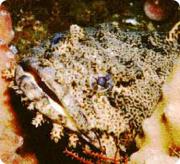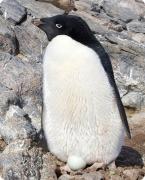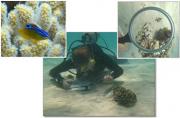Radio Program
Our regular Science and the SeaTM radio program presents marine science topics in an engaging two-minute story format. Our script writers gather ideas for the radio program from the University of Texas Marine Science Institute's researchers and from our very popular college class, Introduction to Oceanography, which we teach to hundreds of non-science majors at The University of Texas at Austin every year. Our radio programs are distributed at to commercial and public radio stations across the country.
Marine organisms have many ways of getting around. They wiggle, flap, crawl, or undulate. And some go high-tech: they use jet propulsion.
The marine jet set includes jellyfish, squid, and octopus. All of them create jet thrust by squirting water at high speed, like compressed air squirting out the back of a jet engine.
The deadliest hurricane in U.S. history slammed into Galveston, Texas, on September 8th, 1900. It killed an estimated 8,000 people. Despite its infamy, though, there’s no formal name for the hurricane. At the time, there was no procedure for naming such storms.
It’s almost not fair. The top predators in the oceans -- great white sharks and some of their kin -- have an extra sense to help them find and track prey: the ability to detect the tiny electrical fields that are generated by all living organisms.
Most sharks have keen senses that allow them to track prey, predators, and mates at varying distances. At close range, they also rely on a network of sensors known as ampullae of Lorenzini, named for the Italian scientist who discovered them more than three centuries ago.
A school of fish often looks like a marching band following a drum major. The entire school maneuvers as a single unit, with everyone turning at almost the same instant.
The fish aren’t following instructions, although they are following a leader. They respond so quickly because of a system that’s a lot like the workings of our inner ears.
The system is known as a lateral line -- small sensory organs arrayed around the fish’s head and in lines across both sides of its body.
Don’t judge a fish by its beauty.
Consider, for example, the toadfish. The name comes from its resemblance to a toad -- bulging eyes, wide head, and warty-looking skin. There are more than 80 species around the world, and many of them live in the mud and muck at the bottom of shallow waters. And some of them even grunt like a toad when they’re scared, mad, or courting.
The world’s longest mountain range is almost completely hidden from sight. It snakes 10,000 miles along the bottom of the Atlantic Ocean, and peeks into view in only a few places.
One of those is a tiny group of islands known as Saint Peter and Saint Paul’s Archipelago. It’s near the equator, about 600 miles off the coast of Brazil. It consists of about half a dozen islands plus a few small clumps of rock. The entire group has just four acres of land area.
Lakes dot the bottom of the Gulf of Mexico: salt lakes − as salty as Great Salt Lake in Utah. They’re infused with a smelly brew of sulfur, hydrogen, methane, and other chemicals. And while that’s not a pleasant environment for most marine life, it does support lots of microscopic life.
The waters around Antarctica are unlike any other waters in the world. They’re cold, deep, and rich with life. And they’re cut off from the other oceans at the surface by a powerful globe-circling current.
In the year 2000, the organization that designates the world’s oceans and seas acknowledged that difference. It named the waters around Antarctica as the fifth ocean − the Southern Ocean.
They may not be able to fly, but like some of their airborne cousins, Adelie penguins follow the Sun. As the year goes by, they can migrate thousands of miles. In part, that’s to follow the Sun, finding areas with at least a few hours of sunlight per day. That suggests that the penguins must need at least some sunlight to survive.
For a young fish, moving too slow can get you snapped up by a bigger fish. But so can moving too fast, or even being too timid.
When small fish that live on coral reefs hatch, they stay near the surface, generally following the currents. When they get older, though, they settle on a nearby reef. But most of these new arrivals get eaten within a couple of days.
A recent study found a few common traits among the fish that are the first to go.






